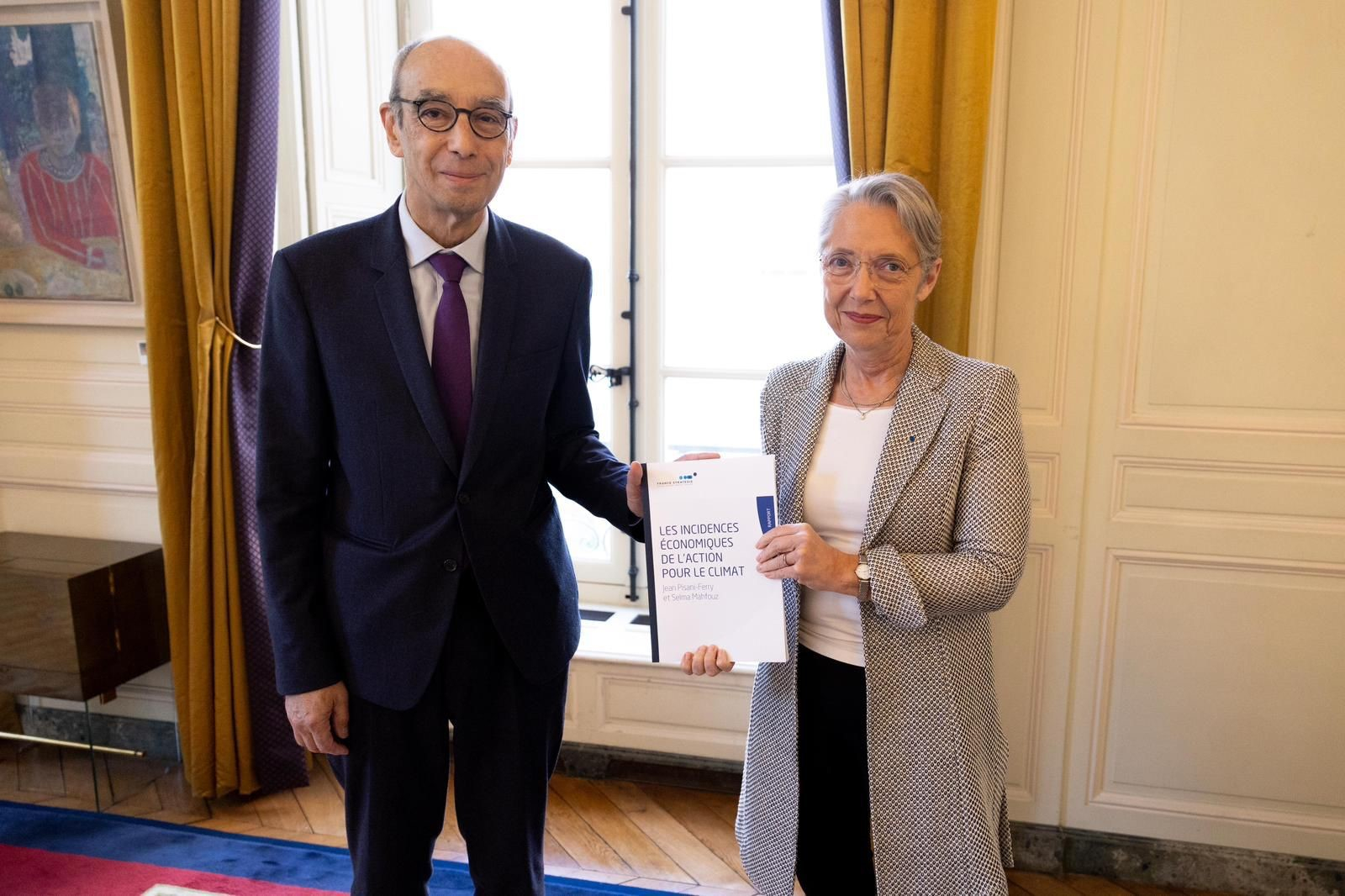
Read the full document in french
The preparation of this report involved over a hundred experts from government bodies, economic institutes, and the academic community[1]. It took place in the new institutional environment resulting from the creation of the General Secretariat for Ecological Planning, and as the revised National Low-Carbon Strategy (SNBC3-Stratégie nationale bas carbone) is being prepared. Eleven thematic reports detailing the issues discussed in the main report are published simultaneously[2].
The main messages are the following:
- Climate neutrality is achievable. However, it will require an industrial-revolution-scale transformation. Unlike past industrial revolutions, this transformation will be global, it will take place at warp speed, and it will be primarily driven by public policies rather than technological innovations and markets.
- This transformation will be based on three economic mechanisms:
- The redirection of technical progress towards green technologies,
- Sufficiency, defined as reducing energy consumption over and above what would result from energy efficiency gains,
- The substitution of capital for fossil fuels.
- There is no permanent trade-off between growth and climate. In the long term, redirecting technological progress may lead to growth rates that are higher in a green economy than a brown one. The precipitous fall of the costs of renewable energies suggest that this is a possibility.
- To reach its GHG reduction objectives by 2030 and thus reach climate neutrality by 2050, Europe needs to accomplish in ten years what it has struggled to achieve in thirty. This brutal acceleration implies that all sectors will have to contribute. To avoid slippages, targets set for 2030 and 2050 should be complemented by binding carbon budgets, both at the European and national levels.
- In the coming years, emission reductions will rely mainly on substituting capital for fossil fuels. Sufficiency will contribute to reducing GHG emissions, but only by 15% to 20%. Sufficiency does not necessarily lead to lower growth. As there are co-benefits it can, in addition, be a source of well-being.
- Decarbonization will require significant additional investment in the next decade (close to €70bn annually or over two percentage points of GDP per year by 2030, in comparison to a scenario without climate action). Despite recent progress, we have not yet reached the path to climate neutrality.
- Financing these investments will likely entail an economic and social cost by 2030, as they do not increase the growth potential. For this reason, the transition away from fossil fuels will likely result in a temporary slowdown in productivity, tentatively estimated to by one quarter of a percentage point per year. This is due to the redirecting of investment towards reducing the reliance on fossil fuels rather than towards expanding production capacity or increasing its efficiency. It will also bring labour and capital reallocations.
- The transition will affect the well-being in ways that are inadequately measured by conventional indicators such as GDP. Regulations are no less painful than carbon pricing in this regard.
- The proper understanding of the effects of the climate transition requires combining different levels of analysis: technical, sectoral, sometimes local, as well as macroeconomic and international, given competitiveness and coordination issues. Further research is needed to improve the toolbox for assessing the economic impacts of climate action in all these dimensions.
- Climate transition is inherently a source of inequality. Even for middle-class households, renovating homes and changing heating systems or acquiring an electric instead of a conventional vehicle, both require investing about a year's income. Even if the investment is cost-effective, its financing may not be accessible without public support.
- The public spending cost of the transition is expected to exceed €30bn per year in 2030. About half of this cost will result from government investment and the other half from subsidies to household investment. To be accepted politically and socially, the economic and social cost of the climate transition must be distributed equally.
- Considering new expenses and temporary revenue reduction due to slower economic growth, the risk on public debt is approximately 10 percentage points of GDP by 2030, 15 points by 2035, and 25 points by 2040 (assuming that the decline in energy-related revenue is offset through activating new resources).
- Delaying mitigation efforts to keep a lid on public debt would be counterproductive. Absent technology breakthroughs, it would only increase the costs for public finances and require even greater efforts in the following years to achieve the climate goals. Public debt is not the main instrument for financing climate transition. However, excessively restricting its use could further complicate the task for policymakers.
- Beyond the necessary reallocation of expenditures, including of fossil fuel-related budgetary and tax expenditures (estimated to be at least €10bn per annum in France, or one-third of a percentage point of GDP), a temporary increase in taxation will likely be required in order to finance the climate transition. This could take the form of a one-off levy on the financial assets of the upper decile. This levy would be explicitly temporary and calibrated ex ante on the anticipated cost of climate transition for public finances.
- In the next decade, climate transition poses a risk of inflationary pressure. In a context of uncertainty over the assessment of inflation, central banks will need to clarify their doctrine and explain their response to the price pressures induced by climate transition. At the very least, they should conduct monetary policy with caution. Moreover, they will likely need to raise temporarily their inflation target.
- The United States Inflation Reduction Act (IRA) illustrates that the convergence of climate ambitions does not imply the convergence of strategies. Thus, heterogeneity of climate policies will likely persist.
- The European Union (EU) faces a serious competitiveness challenge. First, it suffers from high energy prices. Second, the Carbon Border Adjustment Mechanism (CBAM) is an imperfect instrument that limits carbon leakages but does not fundamentally address the competitiveness issue. Last, the European industrial strategy is challenged by the IRA. The European Union cannot preserve its competitiveness while being at the same time a champion of climate, a champion of multilateralism and a champion of budgetary virtue.
- The best approach to steer the transition is to rely on a combination between subsidies, regulations, and carbon pricing. Unlike the United States or China, Europe and France currently blend all three instruments. Despite the political and social challenges raised by carbon pricing, they cannot give up on price signals, which enable cost-effective decentralised decision-making.
- The coordination between European and national policies needs to be revisited. Currently, the EU sets the objectives but leaves a large part of the corresponding political and financial costs to member states, while relying on soft coordination whose effectiveness is uncertain. The EU governance framework has no sticks nor carrots.
- Europe cannot afford to display a large-scale climate strategy while remaining vague about its actual implementation. It is important for the EU to define and establish a new climate governance framework that matches its ambition.
[1] However, the conclusions and recommendations of the main report are those of its authors only.
[2] The eleven thematic reports, available in French on France Stratégie’s website, are: Well-being, Competitiveness, Damages and Adaptation, Indicators and Data, Distributional Issues, Inflation, Capital Markets, Labor Markets, Modelling, Productivity, and Sufficiency.







